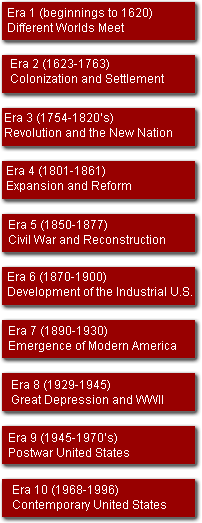 |
 |
 |

ERA 4 HIGHLIGHTS IN NEW HAMPSHIRE: population changes, embargo, the Industrial Revolution, textile mills, transportation changes, farming and wagework, immigrant labor, politics, slavery, an era of reform While the country expanded westward, a bit of territory was added to New Hampshire through the settlement of the Indian Stream Republic disagreement in 1842 by the Webster-Ashburton Treaty. Overall, New Hampshire felt the nineteenth century westward drive toward territorial expansion as a drain on her population. Overwhelmingly rural at the beginning of Era 4, New Hampshire became more urban as it was affected by industrialization. The embargo of American trade with Europe in 1808 and the War of 1812 led to the decline of the hitherto healthy shipbuilding and trading port of Portsmouth, New Hampshire. Yet the need for textiles formerly supplied by Europe led to the growth of the textile industry in New England. The advent of the Industrial
Revolution in New Hampshire came with textile machinery, powered by New
Hampshire rivers. Textile mills built early in the century transformed
the economic and
As factory-made goods replaced the homemade or artisan-made, and as the need for cash increased in order to buy factory-made goods, capitalism transformed New Hampshire society. The switch from a barter, pre-capitalist economy toward an industrial, cash economy caused hardship for those such as small farmers who could not accumulate cash. Transportation changes in the form of canals and railroads tied the state to sources and markets south and west and hastened the flow of people and goods. Canals struggled briefly, soon replaced by railroads. New Hampshire contributed the popular Concord Coach to the transportation revolution. Abbot & Downing exported their coaches to the American West and all over the world. As competition developed, less expensive immigrant labor, especially Irish, replaced native-born farm girls. By the end of Era 4, even though the foreign-born represented only 4.3% of the total NH population, and even though only 520 "free-colored" lived in the state, Nativism and Know-Nothings appeared, espousing sometimes violent opposition to foreigners. Politics mediated between
old ideas and new. Notions of Republican Motherhood and civic virtue translated
into increased education for girls. Ideas of political democracy called
forth pressure for universal male suffrage. Jacksonian Democrats were elected
in the state. The nationally volatile slavery issue led the
Partially fulfilled promises
of democracy, coupled with religious fervor, female education, and the
destabilizing effects of industrialization led to a great reform era that
tackled all manner of social ills through applications of scientific thinking.
This was an era when people formed many voluntary associations around
|